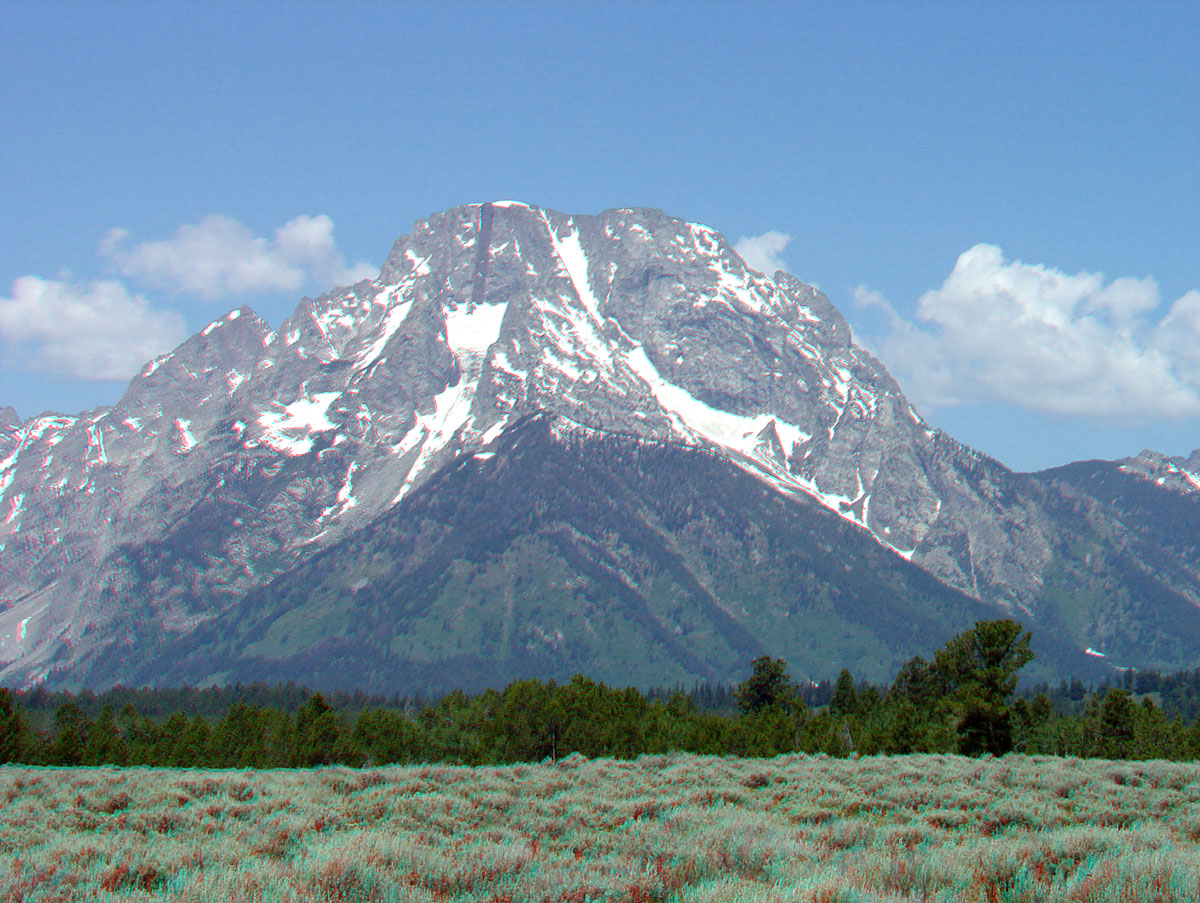
 |
| This view is of Mount Moran near Jackson Lake Junction. The Teton Range rises nearly 5,000 to 7,000 feet above the valley (Jackson Hole). The mountain range is a great fault-block mountain with a great escarpment on its eastern side where vertical displacement along the Teton normal fault has occurred (Love, 1987). The range consists of Precambrian-age metamorphic rocks (gneiss and schist) and granite. Mount Moran is highlighted by a great volcanic dike near its peak. The dark igneous dike, consisting of the mafic rock called diabase, runs steeply across the face of Mount Moran, The summit is capped by a relatively thin layer of Cambrian-age Flathead Sandstone (about 500 million years). East of the mountain front, Flathead Sandstone occurs buried deep within Jackson Hole by nearly 35,000 feet of sedimentary rocks. The basin east of the fault contains nearly 20,000 feet of pre-Laramide sedimentary formations which are overlain by many thousands of feet of valley-fill sediments that have accumulated in the subsiding Jackson Hole basin adjacent to the Teton Range. The age of the granitic crystalline rock in the Teton Range is about 2.5 to 2.8 billion years old, whereas the intrusive dikes are about 1.3 billion years old. Mountain ranges began to form in the region during the Laramide Orogeny beginning about 70 million years ago. However, the modern Teton Range began to rise about 9 million years ago and is still rising (Love and others, 1973; Love, 1987; Reed and Zartman, 1973, Harris and others, 1997). |